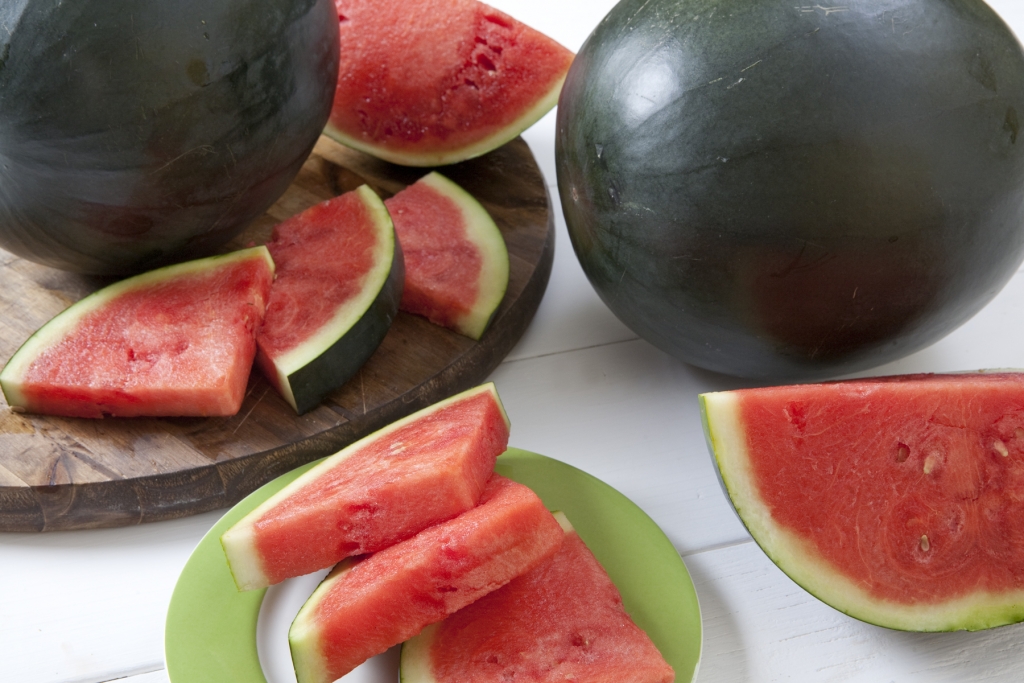- Best Soaker Hose Options Your Yard Truly Needs This Year - January 5, 2024
- Best Tomato Planters You Should Really Consider for Your Garden - December 21, 2023
- Best Home Depot Tomato Cages to Support Your Plants - December 16, 2023
This variety of watermelon is known for its sweet, juicy, and red flesh that is surrounded by a very dark rind. Black watermelon is open-pollinated and can grow up to 50 pounds in weight. The growing season of this variety is about 90 days.
How to Grow Black Watermelon from Seed
Growing watermelon is a fun and rewarding gardening adventure that anyone can do as long as they have a plot of ground. They are easy to grow from seed, and when fully grown, they are a delicious treat. There are two methods for germinating watermelon seeds, they are the indoor method and the outdoor method. Let’s look at both in detail.
Indoor Method:
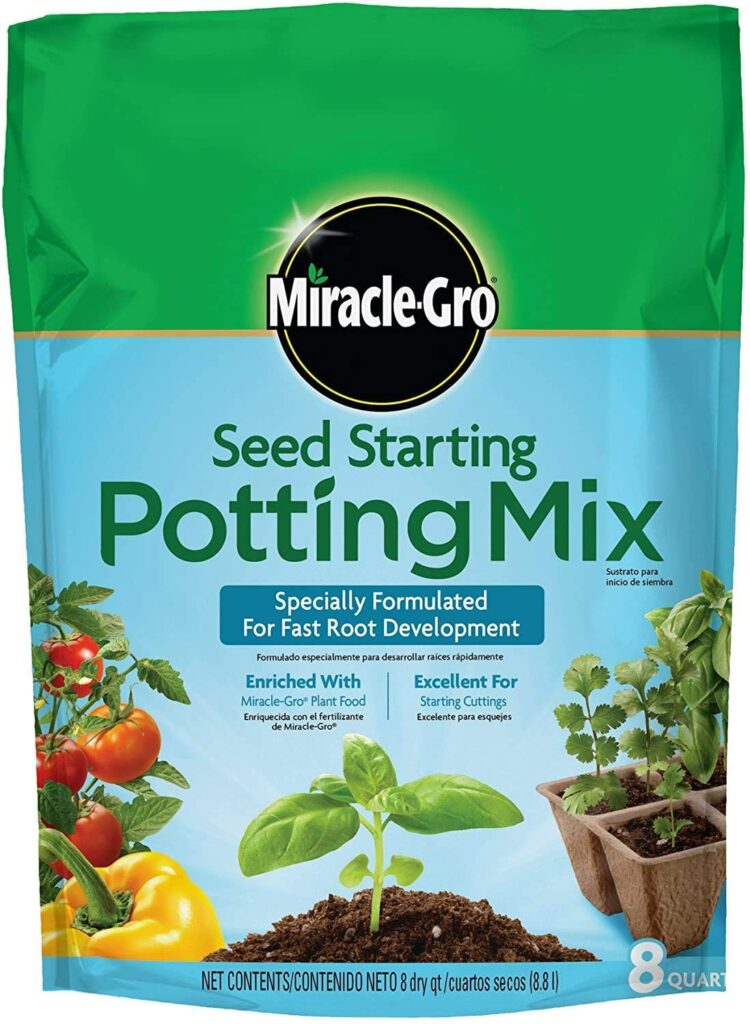
Watermelons have a long growing season, and the Black Watermelon variety is no different. For this reason, it is recommended that seeds should be planted indoors a few weeks to a month before the last frost. The steps for doing this are:
- Fill pots with seed starter soil
- Plant seeds ¼ inch deep in the potting soil (3 seeds per pot)
- Moisten the soil
- Set the pots in an area that is between 80 and 90 degrees Fahrenheit (a heat mat can provide these temperatures if you don’t have a greenhouse)
- Keep the soil moist during this time
- Once seeds germinate (this should take between 3 to 10 days), the temperature should be dropped to the mid-70s, water should be decreased, and plants should be arranged so that there is only one plant per pot
- Once true leaves appear, water should be decreased again but not so much that the plant is dry
- Gradually expose the plant to the outdoors
- After the last frost of the season, transplant it to a permanent spot (it is preferable to do this on a cloudy day to prevent wilting)
Outdoor Method:
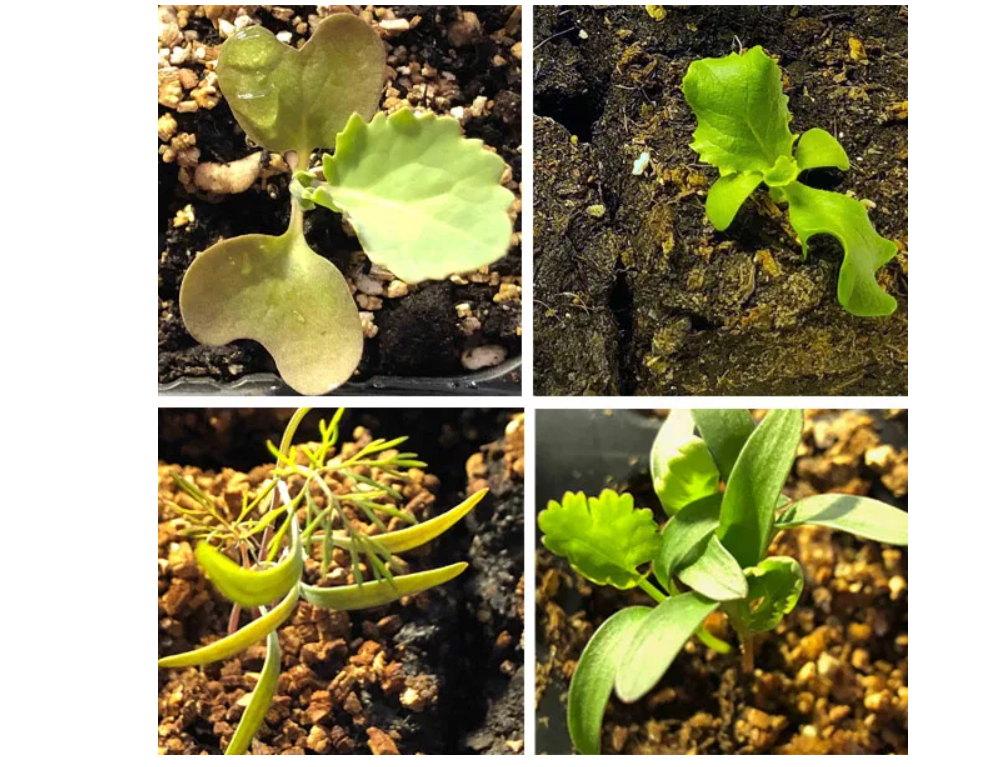
This is a method that should only be used if you live in an area that has long and warm summers; otherwise, it is best to start growing watermelon seeds indoors and transplanting them outdoors after the final spring frost. Here are the steps for growing seeds outdoors.
- Choose a garden bed site
- Plant 6 seeds per hill 1 inch deep in soil that has a temperature of at least 70 degrees Fahrenheit
- Each watermelon seed hill should be set 4 to 6 feet apart
Note: one of the most important aspects of planting a watermelon, is selecting the proper site. An ideal planting site will include the following:
- Well-draining soil
- Soil that has pH levels ranging between 6.5 and 7.5
- Access to plenty of warm sunlight
- Plenty of room for the watermelon to vine unimpeded
When to Plant Black Watermelon
Watermelon seeds should be planted outdoors after the last frost of the season; however, they can be planted indoors a few weeks before the last frost of the season.
Best Black Watermelon Fertilizer
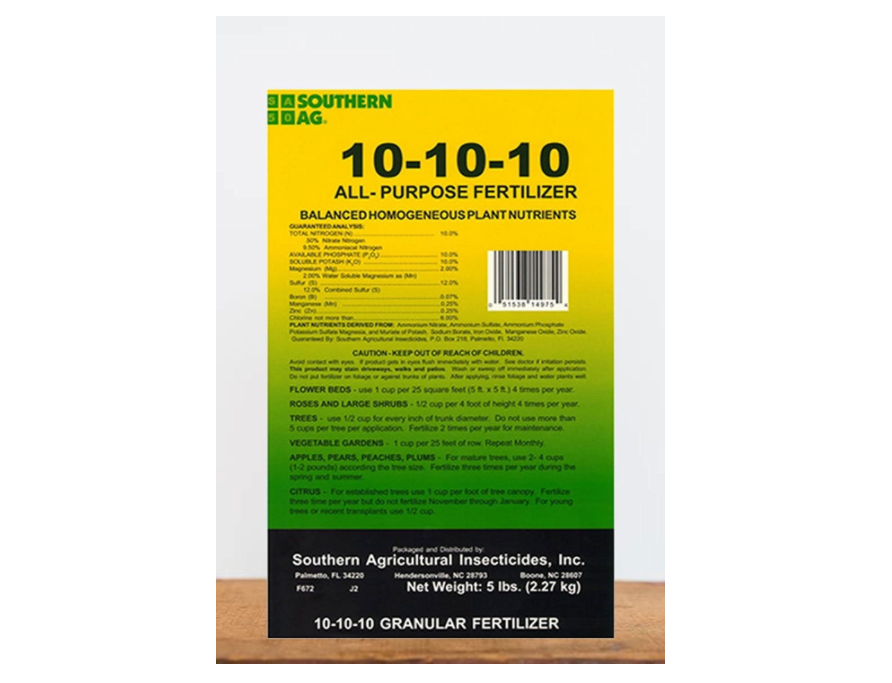
The best way to fertilize a watermelon is to mix 4 to 6 cups of 10-10-10 fertilizer per 100 square feet in the soil where the seeds or sprouts will be planted. The next time this plant will need to be fertilized is when it has grown vines with runners. At this point, a 20-0-0 fertilizer should be applied in 1 to 2 tablespoons to each watermelon mound. The fertilizer should be placed six inches away from the plant’s crown
Black Watermelon Soil Requirements
These plants require soil that is well-draining. While they can benefit from organic mulch, they actually fair better with black plastic as a warming agent.
Black Watermelon Light Requirements
These plants need a lot of sunlight but can benefit from some shade during the hotter parts of the day.
Black Watermelon Water Requirements
These plants will need to be watered deeply every 10 days until the fruit is as large as a tennis ball. At this point, the plants will only need to be watered when their soil is dry.
Best Black Watermelon Companion Plantings
Watermelon can benefit greatly from companion plantings. Some plants provide the watermelon with extra nutrients, while other plants attract pollinators and deter pests. Here are five plants that are ideally designed as companion plantings for any type of watermelon.
Catnip
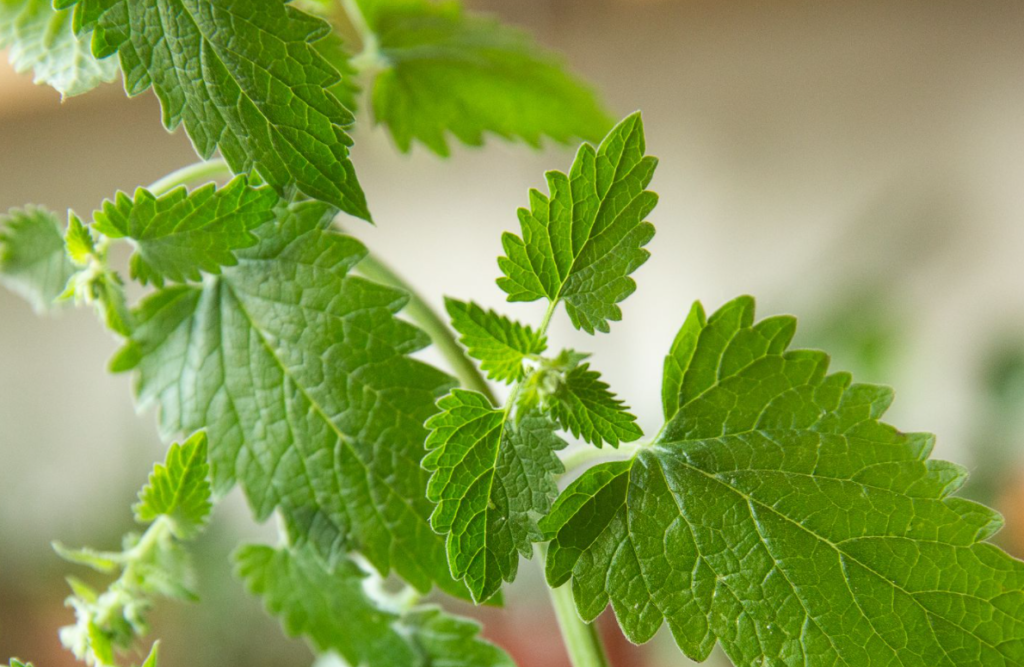
This plant is a good deterrent against aphids.
Garlic
This plant is a good deterrent against aphids.
Marigold
This flower attracts bees which can help pollinate the watermelon plants and helps to deter cucumber beetles.
Lavender
Just like marigold flowers, lavender will also attract pollinators while deterring cucumber beetles.
Pole beans
This plant can help fix soil nitrogen levels so that the watermelon plants get the nutrients they need. As long as these plants do cast a shadow over the watermelon as they grow, they will be great companions.
Note: Use companion plantings that have not been treated with chemical insecticides or pesticides.
Black Watermelon Treatments and Maintenance
These plants are not a very disease or pest-resistant variety so they will need to be inspected regularly to make sure they are growing healthy and do not have an infestation. The most common issues faced by Black Watermelon are:
Alternaria Leaf Spot
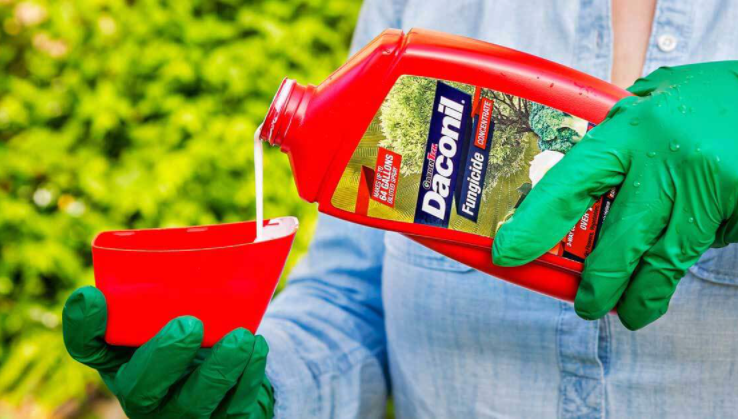
This type of infestation is fungal and appears as dry, brown leaves. It usually infects plans during seasons with warm and humid temperatures. The best way to prevent this problem is to provide the plant with plenty of space, air circulation, and avoid watering the plant’s leaves. To deal with this problem, apply a fungicide to the plant.
Anthracnose
This is a fungal infestation that appears as small, brown, papery spots on the plant’s leaves. It usually infects plants during seasons of extensive rain and high humidity. The best way to prevent this problem is to provide the plant with plenty of space, air circulation, and avoid watering the plant’s leaves. To deal with this problem, apply a fungicide to the plant.
Downy Mildew
This infestation is more closely related to an alga rather than a fungus. It appears on leaves as yellow spots and gray fuzz. The best way to prevent this problem is to provide the plant with plenty of space, air circulation, and sunlight. Fungicides may be used to slow down its spread, but since it isn’t a true fungal infection, fungicides do not prevent or completely eradicate it.
Gummy Stem Blight
This is a disease that is spread via infected seeds. It will split stems and appears on them as a gummy, reddish ooze. It appears on leaves as spots that are brown-black and water-soaked. The best way to deal with this problem is to apply a fungicide and inspect the plants regularly. Do not use seeds from a plant that has been infected with gummy stem blight.
Powdery Mildew
This is a disease that appears on leaves as white and powdery spots. Some leaves turn yellow and grow in distorted shapes. It usually infects plants during warm and dry weather. The best way to prevent and deal with this problem is to spray the plant with a fungicide.
Striped Cucumber Beetles
These are insects that are easy to identify because of their metallic-looking yellow and black stripes. The best way to deal with this type of pest is to treat the plants with an insecticide.
Where to Purchase Black Watermelon
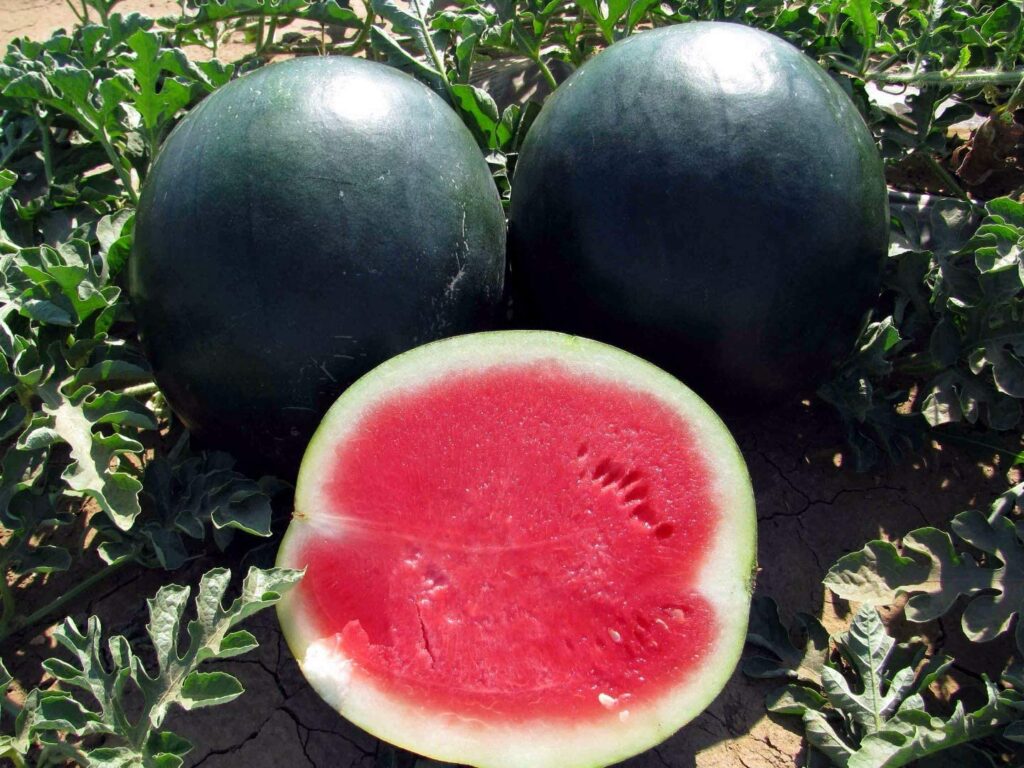
Unless you are ready to dive into one of these delicious fruits with a fork and knife, the best way to purchase a Black Watermelon is in seed form. These online shops have a great selection of seeds:
If, however, you are craving this fruit as a tasty treat very soon, check with your local farmers market.
FAQs
Answer: These plants will grow best in zones 3 to 9.
Answer: While this plant is typically treated as a fruit in the United States, it is more commonly treated as a vegetable in China. It is actually up in stir-fries and stews there. Watermelons are grown and harvested like a vegetable just as cucumbers and squash are and they are also a member of a family of gourds (Cucurbitaceae). Both of these factors make it easy to classify it as a vegetable. However, it is still botanically a fruit just like peppers and tomatoes. So, in the end, watermelon can rightly be called either a fruit or a vegetable.
With a change of perspective on the botanical background of watermelons, maybe it is time to consider new recipes for an old favorite. If you would like to try watermelon in a new way, browse these recipes:
Beef and Watermelon Stir-fry
Grilled Melon Pizzas
Tomato and Watermelon Popsicles
Watermelon Cupcakes
Watermelon Pie
Answer: Yes, their rinds can hold dirt and diseases on them. So, before cutting into one, remember to give it a thorough cleaning.
Answer: Cracks in watermelons are typically caused by fluctuations in temperature. These are still okay to eat and they may actually be sweeter than watermelons without cracks.
Answer: It’s one of the trickiest moments in the produce sections when one has to decide on which watermelon to purchase without seeing its insides. Fortunately, there are methods for determining which watermelon is going to be delicious even before purchasing it.
• Choose a watermelon that does not have dents, cuts, or bruises on its rind. Small scratches are fine.
• Choose a watermelon that feels heavier than it looks. The heavier the better.
• Choose a watermelon that has a creamy yellow underside. This shows that it has ripened in the sun.
• Choose a watermelon that has a dull and hollow sound when thumped.
Answer: Unfortunately, no. Stripes are just an indicator of the watermelon’s variety.
Answer: There are over 1200 varieties of watermelon in the world today.
Answer: If it was purchased refrigerated, then yes, it should be stored in a cold environment until it is consumed. If not, then it is up to you.
Answer: Yes, but is recommended that it be cut up into small pieces first. This makes it easier to use later as ice cubes.
Answer: Watermelon has been found growing wild in the Kalahari Desert. It was eventually cultivated by the ancient Egyptians and transported to China in the 10th century and to Europe in the 13th century.
Answer: These are hybrid watermelons that have three sets of chromosomes. They are also sterile, but they are not genetically modified. Because of this, they must be produced by cross-pollinating male and female watermelon chromosomes.
Note: the tiny white seeds in a seedless watermelon are not actually seeds and they are safe to eat.
Answer: Yes, they are, and actually, they are healthy too. They contain copper, manganese, and potassium which are all beneficial elements for bone development. Plus, they have plenty of B-vitamins, proteins, and amino acids in them. Here are few fun ways to consume them:
• Dry and roast the seeds for a tasty snack
• Put the roasted seeds in a salad
• Blend the roasted seeds into a powder and add it to a smoothie
Answer: The Sultan variety of watermelon is considered the sweetest. It receives a 12.3 rating on the Brix scale.
Conclusion
Watermelons are not just a piece of Americana, they are actually a favorite treat the world over. With so many varieties and levels of sweetness, there is so much that can be done with these delicious fruits, or vegetables, if you prefer. Don’t miss out on trying new types and experimenting with different ways to use them in cuisine. Black Watermelon are some of the tastiest on the market, so start there, and expand outward.
Research Citations

